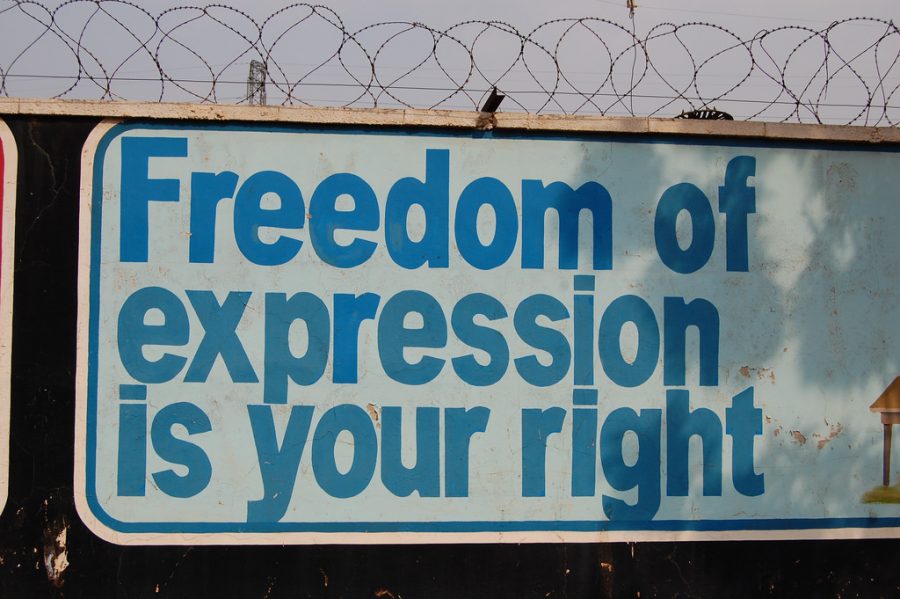Ugandan sign.
Our Guaranteed Freedoms
A students right to expression.
In 1789 the Bill of rights penned by James Madison was ratified and prevented congress from “abridging the freedom of speech.” But it was not clear whether those same rights applied to students in schools. That is, until Tinker v. Des Moines in 1965 after students wore black armbands in school to protest the Vietnam War. The courts ruled in favor of the students in 1969 making it so students are guaranteed freedom of expression in their schools. It must stay that way as that freedom is what defines America and has defined America since 1776.
The freedom to self expression is important to students and should be encouraged as it helps define who they are at that moment. The armbands did this for students at the time, expressing their distasteful view of the war with little disruption to classes. As according to the Court, “their deviation consisted only in wearing on their sleeve a band of black cloth.” The Court understood that students deserve as a guaranteed right to them their freedom of expression as it is part of an individual level of freedom we all deserve.
Of late, however, with social media, it seems some schools do not respect the right of a student to speak freely as seen from The Atlantic, “In Kansas, a high school class president was suspended for a Twitter post making fun of his school’s football team.” The student in question’s tweet was not particularly inflammatory by its nature as it was simple criticism in its purest form and deserved to be protected by the court’s ruling. And as it happened outside a formal school setting that it should be protected as it does no harm.
One could argue the expression that should be brought to attention is that allowing and calling for all freedom of student expression brings with it a danger. Does it include other colors of armbands in particular the red armband bearing the swastika or if a student were to wear clothing that bore the battle flag of the Confederates? Some may argue that these are a form of expression. And would be protected the same as the armbands in Tinker v. Des Moines since some didn’t approve of those armbands. Making it a right to wear them as true freedom of expression applies to all speech not just those of one particular view and has no limitations. Giving true freedom of expression to students might allow for those beliefs to be protected.
The Achilles heel of that argument is that some expression likely will lead to distractions stemming from the hate those symbols are a companion to. The Court said in Bethel School District v. Fraser in 1986, “it is a highly appropriate function of public school education to prohibit the use of vulgar and offensive terms in public discourse.” Wearing a swastika or Confederate flag most certainly would fall onto the offensive side of views. Those symbols are so discriminatory by their nature. All of this talk leads back to the point that students have a right to express themselves in the manner by which they choose and unless the students disrupt the schools day to day functioning the school has no right to silence a students lawfull expression.
Sources
Baltzell, George W. “Constitution of the United States – We the People.” Constitution for the United States – We the People, constitutionus.com/.
Jacobs, Tom. “10 Supreme Court Cases Every Teen Should Know.” The New York Times, The New York Times, archive.nytimes.com/www.nytimes.com/learning/teachers/featured_articles/20080915monday.html.
Wheeler, David R. “Do Students Still Have Free Speech in School?” The Atlantic, Atlantic Media Company, 8 Apr. 2014, www.theatlantic.com/education/archive/2014/04/do-students-still-have-free-speech-in-school/360266/.
